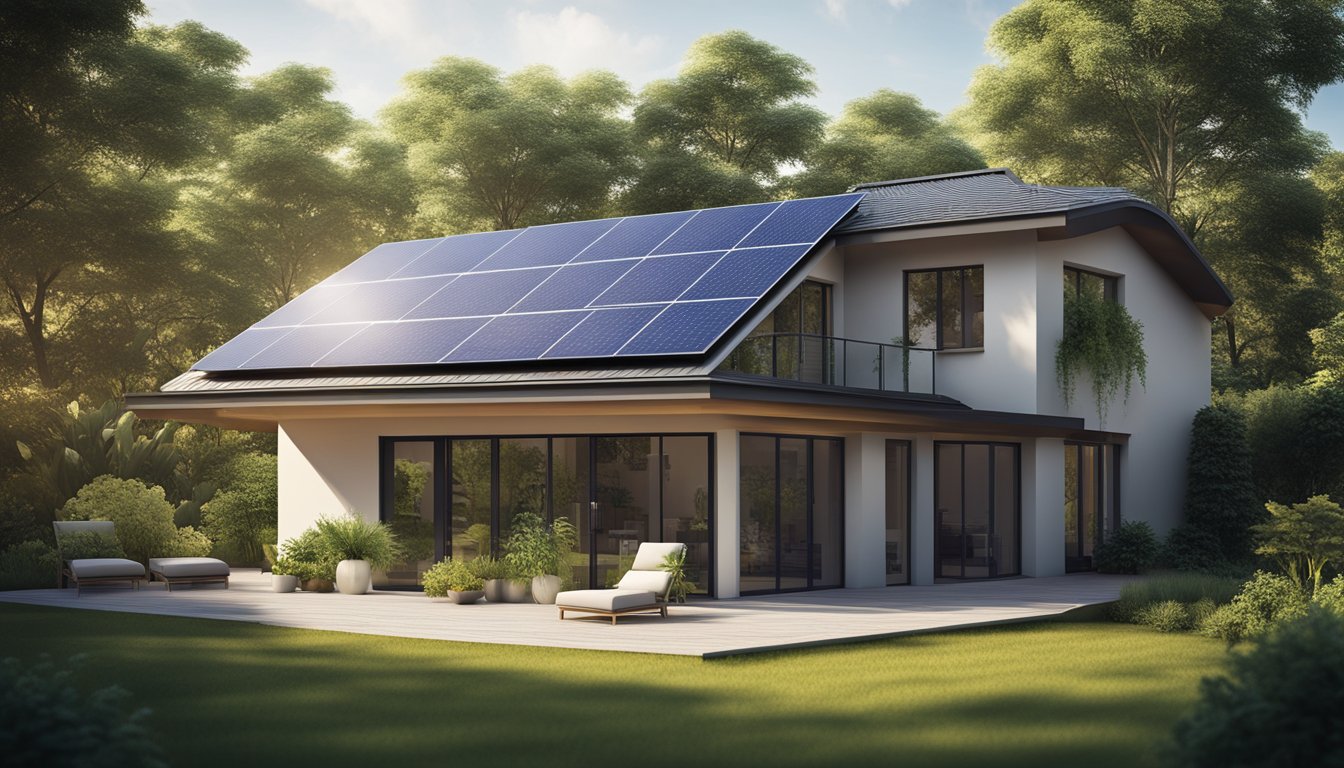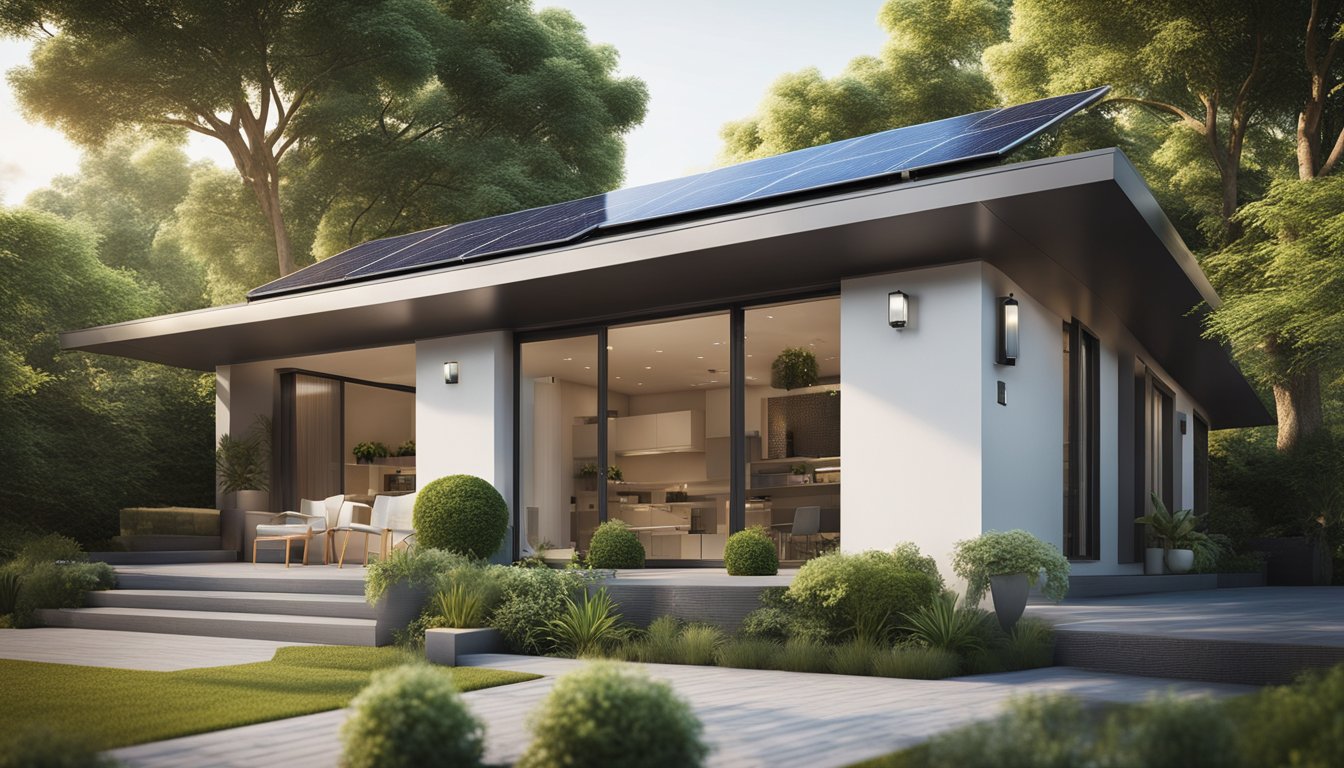Late updated: 25 Oct 2024 09:10
Written by: Elena Prescott
Sustainable Security Solutions For Eco-Friendly Homes: Enhancing Safety and Efficiency
In a world that's becoming increasingly aware of the importance of environmental sustainability, finding ways to integrate eco-friendly practices into every aspect of our lives is crucial. One area where this is starting to make a substantial impact is home security. By choosing sustainable security solutions for our eco-friendly homes, we can reduce our environmental footprint while ensuring our homes are safe and secure. The intersection of technology and eco-consciousness offers exciting opportunities to protect our homes while being kind to the planet.

Traditional security systems often involve significant energy consumption and can contribute to a larger carbon footprint. Fortunately, there are innovative solutions like solar-powered security cameras and energy-efficient lighting systems that can help mitigate these effects. As we explore these cutting-edge technologies, we not only safeguard our living spaces but also contribute to a healthier planet.
Beyond technology, the design of eco-friendly security systems can incorporate elements like natural fencing solutions, which not only provide security but also enhance the aesthetic appeal of our homes. As we delve into these options, we open the door to a future where security and sustainability work hand in hand.
Key Takeaways
- Sustainable security reduces environmental impact.
- Smart tech balances safety and eco-friendliness.
- Design elements can enhance home aesthetics.
Designing Sustainable Security Solutions

Creating sustainable security solutions for eco-friendly homes involves a strategic approach that focuses on assessing specific needs, choosing eco-friendly materials, and integrating renewable energy sources. It’s essential for us to balance safety with sustainability in order to protect our homes and the environment.
Assessing Home Security Needs
Before implementing any system, we need to understand the unique security requirements of our home. This involves identifying vulnerable areas and considering factors such as location, property size, and family lifestyle. By evaluating these elements, we can tailor our security solutions accordingly.
Implementing a system that aligns with these specific needs not only enhances protection but also optimises resource use. This ensures that security solutions are both effective and sustainable.
Eco-Friendly Materials and Technologies
Using environmentally friendly materials in our security systems is crucial for sustainable design. Options like recycled aluminium and bamboo offer durability while maintaining an eco-friendly profile. These materials contribute to reducing the carbon footprint associated with traditional security setups.
Sustainable technologies such as solar-powered surveillance cameras and energy-efficient sensors are becoming increasingly popular. They're designed to minimise energy consumption while maintaining high levels of security.
Renewable Energy Integration
Integrating renewable energy sources into our security systems is a significant step forward. Solar power, in particular, can harness the abundant energy from the sun to operate security devices without relying on non-renewable resources. This reduces both energy costs and environmental impact.
Solar panels can be strategically placed to ensure optimal exposure and efficiency. This ensures that our security systems function reliably, even during power outages, providing a continuous safeguard for our homes. By embracing these sustainable practices, we contribute to a greener world while ensuring our homes remain secure.
Implementing Smart Home Security

As we explore eco-friendly methods for securing our homes, we consider intelligent systems that merge technology with sustainability. Focusing on energy-efficient installations and water conservation methods can offer a robust and green approach to home security.
Smart Home Security System Installation
Installing smart home security systems is a vital step towards an eco-friendly home. Smart sensors, such as motion detectors and smart cameras, can be strategically placed to monitor activities efficiently. These systems often incorporate interconnected devices, allowing us to manage them through a single platform, such as a smartphone app.
To enhance energy efficiency, we can choose devices that operate using sustainable products and have low energy consumption in standby mode. Additionally, opting for products with eco-friendly packaging further reduces environmental impact. Smart locks, which provide keyless entry, are another feature that adds security without the waste of traditional key systems.
Energy-Efficient and Smart Lighting
Energy-efficient lighting solutions are essential for eco-friendly smart home security. Smart lights can be programmed to mimic human presence, deterring potential intruders. With energy-efficient lighting options like LED bulbs, we reduce energy usage significantly while maintaining security visibility around our homes.
Motion detectors, integrated with these systems, automatically adjust lighting based on activity, ensuring lights are on only when necessary. This reduces waste and brings an additional layer of intelligence to our security infrastructure. Smart home technology allows us to schedule these lights for specific times, integrating them seamlessly with our other devices for comprehensive efficiency.
Water Conservation Measures
Water conservation is an often-overlooked aspect of smart home security, but it plays a crucial role. Devices like smart toilets and greywater systems help manage water usage efficiently. These systems can detect leaks or unusual water flows, notifying us instantly to prevent damage, thereby ensuring a secure environment.
Monitoring and controlling water consumption through smart technology not only conserves resources but also protects the home from water-related damage. Implementing these measures supports our aim to maintain an eco-friendly footprint while enhancing the overall security of our homes.
Through the intelligent use of technology, we are making strides towards homes that are as safe as they are sustainable.
Frequently Asked Questions

Our exploration of sustainable security solutions addresses various elements of integrating renewable energy, smart technology, and eco-friendly materials in home security. By considering landscaping and privacy measures, we aim to balance safety with sustainability.
What are the most effective renewable energy sources for residential properties?
Solar power stands out as a highly effective renewable energy source for homes. Photovoltaic panels can be installed on roofs to harness solar energy, reducing reliance on traditional power grids. Wind energy is another option, though its viability depends on local wind conditions.
How can homeowners integrate smart technology to enhance their home security while remaining environmentally conscious?
Smart home technology, including motion sensors and automated lighting systems, can significantly improve security. By using energy-efficient devices, such as LED lights and low-energy surveillance cameras, we can reduce power consumption. These systems often come with apps that allow remote monitoring and control, providing both convenience and security.
What measures can be taken to ensure that home security systems are both energy-efficient and reliable?
Choosing security systems with energy-saving modes is essential. Devices that operate on low power and use standby functions help maintain efficiency. Additionally, investing in quality products from reputable brands ensures reliability and enhances the longevity of the security system setup.
What are the benefits of using sustainably sourced materials in home security infrastructure?
Sustainable materials, such as reclaimed wood and recycled metal, offer durability while minimizing environmental impact. They often require less energy in production compared to new materials. Using such materials for fences and gates not only strengthens security but also supports environmentally responsible practices.
In what ways can landscaping be used to improve home security without compromising on sustainability?
Strategic use of plants and natural barriers can enhance privacy and deter intruders. Thorny bushes and dense hedges serve as natural deterrents along property lines. Selecting native plant species ensures low maintenance and efficient water use, aligning with sustainable landscaping principles.
What are the best practices for maintaining privacy and safety in eco-friendly home designs?
Implementing double-glazed windows and installing blinds or reflective films can boost privacy in homes. These measures not only enhance security but also improve energy efficiency by reducing heat loss. Incorporating such solutions seamlessly integrates privacy features without sacrificing environmental considerations.
